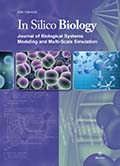Authors: Chikhi, Abdelouahab | Bensegueni, Abderrahmane | Boulahrouf, Abderrahmane | Bencharif, Mustapha
Article Type:
Research Article
Abstract:
Because peptide deformylase (PDF) is essential for the initiation of translation in eubacteria but not in eukaryotes, it is a potentially interesting target for antibiotics. Computer simulation using docking software can be used to model protein-ligand interactions, and in this brief report we describe its use in optimizing the design in PDF-directed inhibitors. PDF was used as target for a set of five inhibitors with substantial structural differences. Docking results show that the compound 1BB2 (actinonin)
…binds with high affinity to the enzyme and produces the most stable complex, forming nine hydrogen bonds with the enzyme active site. Its binding energy is ΔG=−31.880 kJ/mol. The modeling study shows that when the methyl group of 1BB2 is replaced with an amine group, the binding energy is increased to −35.316 kJ/mole. This enhancement is more marked (ΔG=−41.141 kJ/mol) when the propyl group and the five-membered ring of 1BB2 are replaced by an amide group and a phenyl ring, respectively. We describe an attempt to design better antibiotics on the basis of a computer-aided simulation of the interaction between a drug and its target molecule.
Show more
Keywords: Antibiotic resistance, target, peptide deformylase, antibacterial agents, deformylation, protein maturation, theoretical method, docking software, interactions, cobalt metalloenzyme, FlexX program, binding energy, enzyme-inhibitor complex, hydrogen bonds, modeling, substitution, affinity
Citation: In Silico Biology,
vol. 6, no. 5, pp. 459-466, 2006
Price: EUR 27.50





